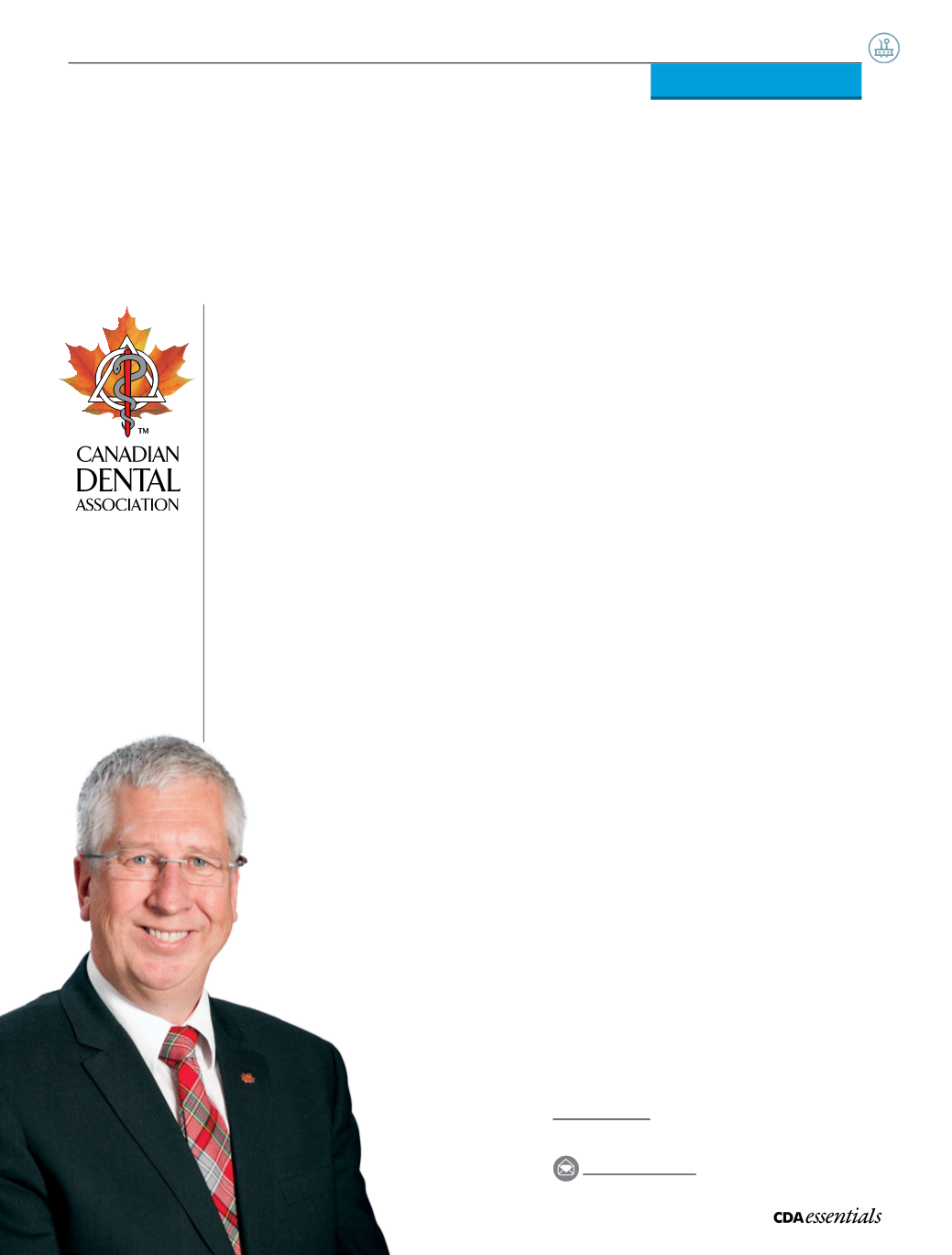
7
Volume2 Issue3
|
CDA
at
W
ork
BridgingtheDivide
Y
ears ago as a young dental stu-
dent, when textbooks were still our
main source of information, I re-
member a book titled “The medical
management of the dental patient”
and around then I was in a used bookstore and
foundasimilar text,written forear,noseand throat
residentscalled, “Themedicalmanagementof the
surgical patient.” This got me thinking about the
relationshipwe havewithour colleagues inother
areasofhealthcare.
It is awell-establishedprinciple that responsibility
for themedicalmanagement of a surgical patient
rests with the surgeon; whenwe as dentists take
an instrument andcut tissue, be thatmucosawith
a blade or tooth with a bur, we are performing
surgery. Only the surgeon, or in our case the
dentist, can weigh the benefits of a procedure
against its risks, and one of those risks is to the
medicalwell-beingof thepatient.Wemustweigh
theseconsiderationstogetherwiththepatientand
only then canwe obtain true informed consent.
Tomost I am stating the obvious, but I worry
when reading clinical articles or listening to
CEpresentations, about thesuggestion that
medicalmanagementdecisions shouldbe
delegated toanotherpractitioner.
Please do not misunderstand—of course
we must consult with a patient’s phys-
icians when they present with complex
medical issues; we often need to modify
proposed treatments based on these con-
sultations andmay need to co-manage the
medical dimension of their care. However,
the emphasis is onmanaging this aspect
of care collaboratively and not
abdicating the responsibility.
Letme illustratewithanexample: adentist is faced
with theelectiveextractionof a tooth for apatient
on blood thinners. The anticoagulant is warfarin
and thepatient reportsa recent thrombosis.With-
out fulsome discussion, the patient’s physician
may not know that retaining the tooth is a viable
option or that the dentist is quite comfortable
obtaininghemostasiswith an INRof 2 and apply-
ing local measures. Instead, a decision might be
made to reduce the INR, thus placing the patient
in jeopardyof another thrombosis.
Much is being written about the links between
oral and general health andwe hear phrases like
“putting the mouth back in the body.” We also
hear of the difficulty that some of our colleagues
encounter securing sufficient operating room
time to ensure the health needs of our patients
are beingmet. That causesme to ask if we need
to look at ourselves and examine if we are doing
all that we should to put dentistry back into the
healthprofessions.
Thismaybeanopportune time for acall toaction.
Let’s take time to increase our engagement with
our medical colleagues. For those who are en-
gaged in any hospital work, attend the medical
staff meetings. Consider participating in a med-
ical CE event, particularly if the subject may have
an impact on the medical management of our
patients (I attended a lecture on the use of bis-
phosphonates in osteoporosis a little while ago).
Offer to give a presentation to a physician group;
many frontlinephysicians arepresentedwithden-
tal issues on a daily basis andwould appreciate a
refresher on subjects like tooth fracture, infection
ofdental originor even intra-oral local anesthesia.
We all know that health care is deliveredmost ef-
fectively using a team approach. So let’s work to
make the teammore inclusive and the interface
betweenmedicineanddentistry seamless.
AlastairNicoll, bdsh
ons
Medical-Dental Interface:
From thePresident


